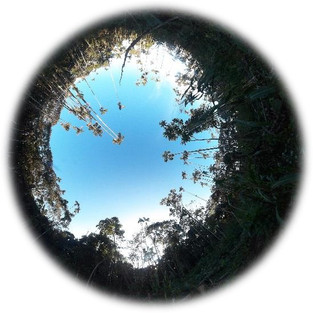Scientifically Based Ecological Restoration
- admin729427
- Aug 24, 2020
- 3 min read
Updated: Jan 2, 2022
At Humans for Abundance, our purpose is the conservation and restoration of the Amazon rainforest; for now, we are especially focused on the community of Mushullakta. In order to know what state the ecosystem we are restoring is in, we conducted a baseline study of the vegetation and the type of insects and arachnids that are found in the plots of land. This study gives us the guidelines to follow and will allow us to measure the increase in biodiversity and the strengthening of the ecosystem, year after year.
To that effect, our biologist and verifier, Dr. Selene Escobar, together with her team of scientists, organized two field trips. In December 2019, the scientists collected the data: they studied the plants, trees, insects, arachnids and other arthropods in a second-growth forest and in a 'naranjilla' plantation, located on José Narvaez's farm, our first restorer; then, they compared this information with the data they collected from the nearby old-growth forest reserve, to establish a baseline.
From left to right: a 'naranjilla' plantation, a second-growth forest, and an old-growth forest.
From left to right: tree canopy cover in the 'naranjilla' plantation, second-growth forest and old-growth forest.
What method was used for this study?
There were two parts to the vegetation study; first, a 30-tree census was carried out on trees with trunks measuring over two and a half centimeters in diameter: each tree's height was measured, as well as the trunk and the canopy’s diameter. To study the progress of the trees, each one was marked with a metal plate and with a GPS.

For the second part of the vegetation study, the team of scientists established five, four-square-meter sections, in each habitat, (old-growth forest, second-growth forest and a 'naranjilla' plantation), for a total of fifteen sections. In each section, they measured the percentage of land covered by plants, by trees and by treetops (the canopy). They also calculated the depth of the fallen leaves on the ground.

Regarding the arthropods study (insects, arachnids, etc.), in the same sections mentioned above, the team made direct observations, captured specimens by hand or using a special net, and took photos.

What were the results? What are the conclusions and suggestions?
With the information collected, our team of scientists determined the indicator species in the old-growth forest; an indicator species is a species whose presence or absence reveals an ecosystem's health. In this case, these are 'copal', dragon's blood, cedar, Ecuador laurel, balsa tree, and 'mascarey'. Additionally, these species have an ancestral importance for the community, and wild animals also use them as food or shelter.
The team also observed that there are insects and arachnids in the old-growth forest that are unique to this ecosystem, such as daddy long-legs, that weren't found in the other ecosystems. In the second-growth forest, there are arthropods that also live in the old-growth forest, such as stick-insects. However, in the 'naranjilla' plantation, there are too many plant-eating insects, like grasshoppers, crickets, locusts, or cicadas; this is due to the excess of grassy plants and makes the 'naranjilla' plantation vulnerable to insect plagues. With the restoration work we are doing, which includes an active management of insects and arachnids, we are hopeful that the arthropod composition will be placed back into balance, and that all types of insects and arachnids will return to the restored ecosystems.
In conclusion, in the old-growth forest, the trees are mostly very thick and tall, and have very wide canopies; fortunately, in the second-growth forest, despite the fact that there has been a lot of logging, the conditions are still similar to those in the old-growth forest. In contrast, in the 'naranjilla' plantation, there are hardly any trees, the biodiversity is very low, and there are too many grassy plants. Therefore, the second-growth forest has conditions that are conducive to the restoration of native species; and, despite the fact that there are too many grassy plants in the ‘naranjilla’ plantation, it's surrounded by forest, which acts as a natural source of restoration, so the possibilities of restoration are also very encouraging.
The study was carried out in the province of Napo, in the canton of Archidona, near the Sumaco-Napo-Galeras National Park, on a thirteen-hectare plot of land belonging to José Narváez, one of our first restorers, located in the Kichwa community of Mushullakta.
PERMITS:
This study was carried out under research permit No. 26-19-IC-FAU/FLO-DPAN/MA issued by the Environmental Department of the Province of Napo.
Sample mobilization guide No. 131-12-2019-VS-DPAN-MAE























